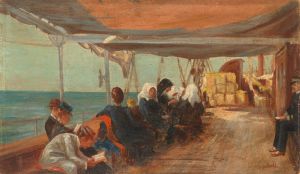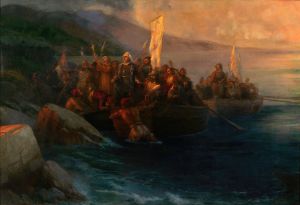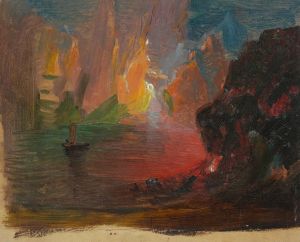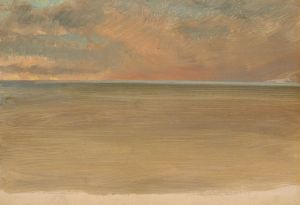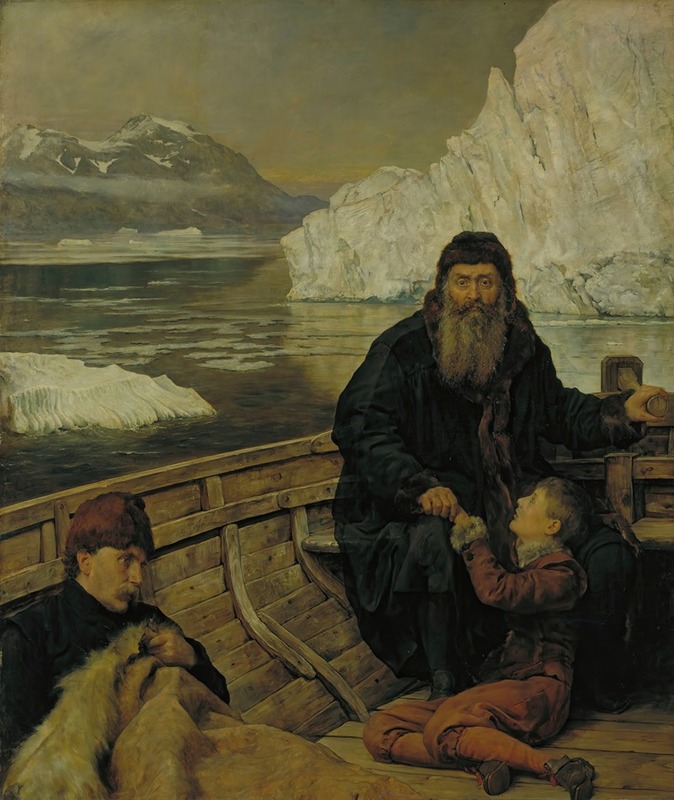
The Last Voyage of Henry Hudson
A hand-painted replica of John Collier’s masterpiece The Last Voyage of Henry Hudson, meticulously crafted by professional artists to capture the true essence of the original. Each piece is created with museum-quality canvas and rare mineral pigments, carefully painted by experienced artists with delicate brushstrokes and rich, layered colors to perfectly recreate the texture of the original artwork. Unlike machine-printed reproductions, this hand-painted version brings the painting to life, infused with the artist’s emotions and skill in every stroke. Whether for personal collection or home decoration, it instantly elevates the artistic atmosphere of any space.
"The Last Voyage of Henry Hudson" is a painting by the British artist John Collier, created in 1881. This historical painting depicts the final moments of the English sea explorer Henry Hudson, who is best known for his explorations of present-day Canada and parts of the northeastern United States.
Henry Hudson made several voyages in the early 17th century, seeking a northwest passage to Asia. His expeditions were significant in the mapping and exploration of the Arctic and North America. The painting captures a dramatic and poignant moment from Hudson's last voyage in 1610-1611 aboard the ship Discovery.
During this expedition, Hudson and his crew became trapped in the ice in what is now known as Hudson Bay. As the harsh winter set in, tensions rose among the crew due to the extreme conditions and scarcity of food. By the spring of 1611, the crew mutinied against Hudson. They set him, his teenage son John, and seven loyal crew members adrift in a small open boat. Hudson and his companions were never seen again, and their ultimate fate remains unknown.
John Collier's painting vividly portrays this tragic event. The composition shows Hudson and his son in the small boat, surrounded by the icy waters and desolate landscape of the Arctic. The expressions on their faces reflect a mix of resignation and determination, capturing the emotional weight of their dire situation. The painting is noted for its dramatic use of light and shadow, which enhances the sense of isolation and despair.
Collier was a prominent artist in the late 19th and early 20th centuries, known for his historical and literary subjects. His works often combined meticulous attention to detail with a strong narrative quality, making them both visually compelling and historically informative. "The Last Voyage of Henry Hudson" is a prime example of his ability to convey complex historical events through powerful imagery.
The painting is part of the collection at the National Maritime Museum in Greenwich, London. It serves as a poignant reminder of the perils faced by early explorers and the human cost of their quests for discovery. Through Collier's artistic interpretation, viewers are invited to reflect on the bravery and tragedy of Henry Hudson's final voyage.












